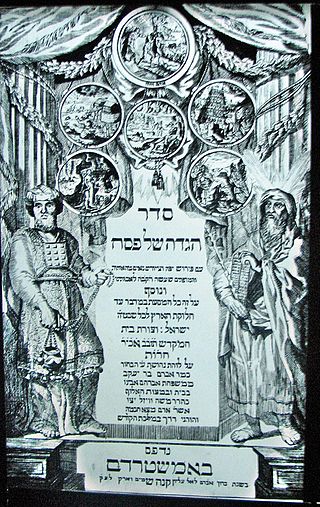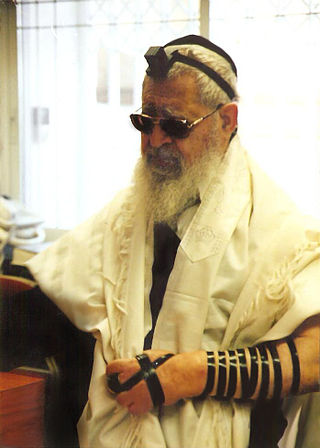Levites or Levi are Jewish males who claim patrilineal descent from the Tribe of Levi. The Tribe of Levi descended from Levi, the third son of Jacob and Leah. The surname Halevi, which consists of the Hebrew definite article "ה" Ha- ('the') plus Levi ('Levite'), is not conclusive regarding being a Levite; a titular use of HaLevi indicates being a Levite. The daughter of a Levite is a Bat Levi.

Paradesi Jews immigrated to the Indian subcontinent during the 15th and 16th centuries following the expulsion of Jews from Spain. Paradesi refers to the Malayalam / Tamil language word that means foreign as they were newcomers. These Sephardic immigrants fled persecution and death by burning in the wake of the 1492 Alhambra decree expelling all Jews who did not convert to Christianity from Spain and King Manuel's 1496 decree expelling Jews from Portugal. They are sometimes referred to as "White Jews", although that usage is generally considered pejorative or discriminatory and refers to relatively recent Jewish immigrants, predominantly Sephardim.
Spanish and Portuguese Jews, also called Western Sephardim, Iberian Jews, or Peninsular Jews, are a distinctive sub-group of Sephardic Jews who are largely descended from Jews who lived as New Christians in the Iberian Peninsula during the few centuries following the forced expulsion of unconverted Jews from Spain in 1492 and from Portugal in 1497. They should therefore be distinguished both from the descendants of those expelled in 1492 and from the present-day Jewish communities of Spain and Portugal.

Joseph Athias was a merchant, bookprinter and the publisher of a famous Hebrew Bible which was approved by States-General of the Dutch Republic and both Jewish and Christian theologians.

The history of the Jews in the Netherlands largely dates to the late 16th century and 17th century, when Sephardic Jews from Portugal and Spain began to settle in Amsterdam and a few other Dutch cities, because the Netherlands was an unusual center of religious tolerance. Since Portuguese Jews had not lived under rabbinic authority for decades, the first generation of those embracing their ancestral religion had to be formally instructed in Jewish belief and practice. This contrasts with Ashkenazi Jews from central Europe, who, although persecuted, lived in organized communities. Seventeenth-century Amsterdam was referred to as the "Dutch Jerusalem" for its importance as a center of Jewish life. In the mid 17th century, Ashkenazi Jews from central and eastern Europe migrated. Both groups migrated for reasons of religious liberty, to escape persecution, now able to live openly as Jews in separate organized, autonomous Jewish communities under rabbinic authority. They were also drawn by the economic opportunities in the Netherlands, a major hub in world trade.

Johannes Leusden was a Dutch Calvinist theologian and orientalist.

The community of Sephardic Jews in the Netherlands, particularly in Amsterdam, was of major importance in the seventeenth century. The Portuguese Jews in the Netherlands did not refer to themselves as "Sephardim", but rather as "Hebrews of the Portuguese Nation." The Portuguese-speaking community grew from conversos, Jews forced to convert to Catholicism in Spain and Portugal, who rejudaized under rabbinical authority, to create an openly self-identified Portuguese Jewish community. As a result of the expulsions from Spain in 1492 and Portugal in 1496, as well as the religious persecution by the Inquisition that followed, many Spanish and Portuguese Jews left the Iberian peninsula at the end of the 15th century and throughout the 16th century, in search of religious freedom. Some migrated to the newly independent Dutch provinces which allowed Jews to become residents. Many Jews who left for the Dutch provinces were crypto-Jews. Others had been sincere New Christians, who, despite their conversion, were targeted by Old Christians as suspect. Some of these sought to return to the religion of their ancestors. Ashkenazi Jews began migrating to the Netherlands in the mid-seventeenth century, but Portuguese Jews viewed them with ambivalence.
The Nederlands-Israëlitisch Kerkgenootschap (NIK) is the umbrella organisation for most Ashkenazi Jewish communities in the Netherlands, and is Orthodox in nature, while to be described as traditional in outlook. The expression Orthodox, is for the Dutch situation at least, of a later date than the existence of the congregations that make up the NIK and the NIK itself. The Rabbi of the NIK is Rabbi Dr. Raphael Evers. In total, the NIK has some 20 rabbis actively working in 18 congregations throughout the country, serving some 5,000 Jews.

The Portuguese Synagogue, also known as the Esnoga, or Snoge, is a late 17th-century Sephardic synagogue in Amsterdam, completed in 1675. Esnoga is the word for synagogue in Judaeo-Spanish, the traditional Judaeo-Spanish language of Sephardi Jews.
Jewish music is the music and melodies of the Jewish people. There exist both traditions of religious music, as sung at the synagogue and domestic prayers, and of secular music, such as klezmer. While some elements of Jewish music may originate in biblical times, differences of rhythm and sound can be found among later Jewish communities that have been musically influenced by location. In the nineteenth century, religious reform led to composition of ecclesiastic music in the styles of classical music. At the same period, academics began to treat the topic in the light of ethnomusicology. Edwin Seroussi has written, "What is known as 'Jewish music' today is thus the result of complex historical processes". A number of modern Jewish composers have been aware of and influenced by the different traditions of Jewish music.
This article describes the principal types of religious Jewish music from the days of the Temple to modern times.

The History of the Jews in Amsterdam focuses on the historical center of the Dutch Jewish community, comprising both Portuguese Jews originally from both Spain and Portugal and Ashkenazi Jews, originally from central Europe. The two separate groups have had a continuing presence since the seventeenth century. Amsterdam has been called a Jerusalem of the West and the "Dutch Jerusalem". The Holocaust in the Netherlands devastated the Jewish community, with the Nazis murdering some 75% of the approximately 80,000 Jews at time present in Amsterdam, but the community has managed to rebuild a vibrant and living Jewish life for its approximately 15,000 present members.

Sephardic Haredim are Jews of Sephardi and Mizrahi descent who are adherents of Haredi Judaism. Sephardic Haredim today constitute a significant stream of Haredi Judaism, alongside the Hasidim and Lita'im. An overwhelming majority of Sephardic Haredim reside in Israel, where Sephardic Haredi Judaism emerged and developed. Although there is a lack of consistency in many of the statistics regarding Haredim in Israel, it is thought that some 20% of Israel's Haredi population are Sephardic Haredim. This figure is disputed by Shas, which claims that the proportion is "much higher than 20%", and cites voting patterns in Haredi cities to support its position.
David ben Abraham de Castro Tartas was a Portuguese Jewish printer in Amsterdam. Between 1662 and 1701 his press printed the Gazeta de Amsterdam, a newspaper of the exiled Jewish community.
Moses Uri ben Yoseph HaLevi, also Moses Uri Levi or Moses Uri Halewi or Philip Uri Joosten Halevi [not to be confused with Moses ben Joseph ben Merwan Ha-Levi] was originally a German rabbi who become an instrumental figure and a key founder of the Spanish-Portuguese community of Amsterdam. Born likely in the German city of Wittmund, Germany or Braunschweig, in the year 1602 he became the first chief rabbi of the Jewish Community of Amsterdam. He is considered to be the founder of the first Jewish community in Amsterdam and the first rabbi of a Sephardic community in Northern Europe.
Shimon Akiva Baer ben Yosef of Vienna was a 17th-century Viennese Talmudist and kabbalistic writer.
Rabbi Moses Raphael de Aguilar was a Sephardic-Dutch rabbi, Hebrew Grammatician and scholar, who wrote more than 20 books on various topics : a commentary on biblical verses, a Hebrew grammar, books on Jewish law, and treatises on Aristotelian logic a classical Greek and Roman literature. He was an erudite classical scholar, an important lecturer at the Amsterdam Talmud Torah, taught at Ets Haim and ran a successful private school.
Der Beobachter an der Weichsel — Dostrzegacz Nadwiślański was the first Jewish newspaper. It was a weekly printed in Congress Poland, then part of the Russian Empire, between December 3, 1823 and November 29, 1824, 44 issues in total, with a circulation of 150 copies.
Solomon de Oliveyra was a Dutch rabbi, poet, and philologist. He has been described as the "preeminent and omnipresent Hebrew poet of Jewish Amsterdam" in the late seventeenth century.
Menahem Mann Ben Solomon ha-Levi Amelander was a Dutch-Jewish author and historian of the 18th century. He died before 1767.







